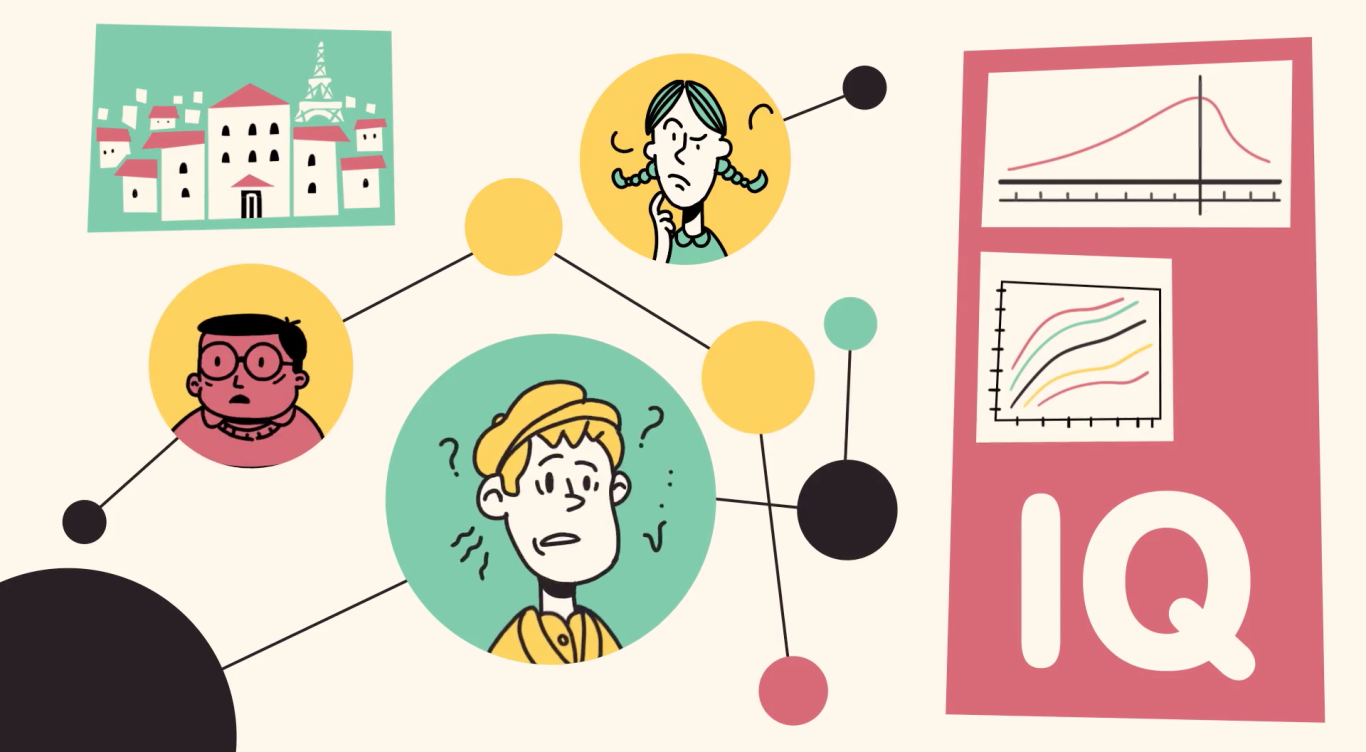Wednesday, Sep 15, 2021
Research conducted by Dr. Stefan C. Dombrowski of Rider University’s school psychology program delves into the complicated history behind the IQ test to challenge its approach to interpreting intelligence.
Do IQ tests accurately measure intelligence? The TED-Ed video “The Dark History of IQ Tests,” created based on research conducted by Dr. Stefan Dombrowski, professor and director of the school psychology program at Rider, investigates the problematic use of the tests throughout history to question whether a person's intelligence can be measured in a single numerical score.
This educational resource relates to Dr. Dombrowski’s award-winning article on IQ test interpretation and to the entirety of his research, which focuses on evidence-based IQ test interpretation. In addition to leading Rider’s school psychology program, which is one of only seven such programs in New Jersey with full accreditation by National Association of School Psychologists (NASP), Dr. Dombrowski has published over 110 articles/chapters and five books on issues in children’s development and evidence-based psychological assessment.
Video Transcript
00:13
In 1905, psychologists Alfred Binet and Théodore Simon designed a test for children who were struggling in school in France. Designed to determine which children required individualized attention, their method formed the basis of the IQ test.
00:31
Beginning in the late 19th century, researchers hypothesized that cognitive abilities like verbal reasoning, working memory, and visual-spatial skills reflected an underlying general intelligence, or g factor. Simon and Binet designed a battery of tests to measure each of these abilities and combine the results into a single score. Questions were adjusted for each age group, and a child’s score reflected how they performed relative to others their age. Dividing someone’s score by their age and multiplying the result by 100 yielded the intelligence quotient, or IQ. Today, a score of 100 represents the average of a sample population, with 68% of the population scoring within 15 points of 100.
01:22
Simon and Binet thought the skills their test assessed would reflect general intelligence. But both then and now, there’s no single agreed upon definition of general intelligence. And that left the door open for people to use the test in service of their own preconceived assumptions about intelligence.
01:43
What started as a way to identify those who needed academic help quickly became used to sort people in other ways, often in service of deeply flawed ideologies. One of the first large-scale implementations occurred in the United States during WWI, when the military used an IQ test to sort recruits and screen them for officer training. At that time, many people believed in eugenics, the idea that desirable and undesirable genetic traits could and should be controlled in humans through selective breeding. There were many problems with this line of thinking, among them the idea that intelligence was not only fixed and inherited, but also linked to a person’s race. Under the influence of eugenics, scientists used the results of the military initiative to make erroneous claims that certain racial groups were intellectually superior to others. Without taking into account that many of the recruits tested were new immigrants to the United States who lacked formal education or English language exposure, they created an erroneous intelligence hierarchy of ethnic groups. The intersection of eugenics and IQ testing influenced not only science, but policy as well. In 1924, the state of Virginia created policy allowing for the forced sterilization of people with low IQ scores— a decision the United States Supreme Court upheld. In Nazi Germany, the government authorized the murder of children based on low IQ.
03:23
Following the Holocaust and the Civil Rights Movement, the discriminatory uses of IQ tests were challenged on both moral and scientific grounds. Scientists began to gather evidence of environmental impacts on IQ. For example, as IQ tests were periodically recalibrated over the 20th century, new generations scored consistently higher on old tests than each previous generation. This phenomenon, known as the Flynn Effect, happened much too fast to be caused by inherited evolutionary traits. Instead, the cause was likely environmental— improved education, better healthcare, and better nutrition.
04:05
In the mid-twentieth century, psychologists also attempted to use IQ tests to evaluate things other than general intelligence, particularly schizophrenia, depression, and other psychiatric conditions. These diagnoses relied in part on the clinical judgment of the evaluators, and used a subset of the tests used to determine IQ— a practice later research found does not yield clinically useful information. Today, IQ tests employ many similar design elements and types of questions as the early tests, though we have better techniques for identifying potential bias in the test. They’re no longer used to diagnose psychiatric conditions. But a similarly problematic practice using subtest scores is still sometimes used to diagnose learning disabilities, against the advice of many experts. Psychologists around the world still use IQ tests to identify intellectual disability, and the results can be used to determine appropriate educational support, job training, and assisted living.
05:12
IQ test results have been used to justify horrific policies and scientifically baseless ideologies. That doesn’t mean the test itself is worthless— in fact, it does a good job of measuring the reasoning and problem-solving skills it sets out to. But that isn’t the same thing as measuring a person’s potential. Though there are many complicated political, historical, scientific, and cultural issues wrapped up in IQ testing, more and more researchers agree on this point, and reject the notion that individuals can be categorized by a single numerical score.
